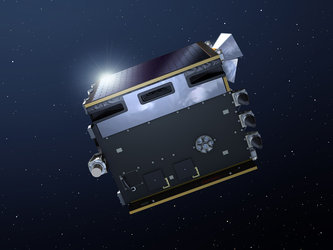Starting operations
Now safely in orbit, a complex commissioning period begins, where payloads and systems are gradually activated and their performance validated. This commissioning phase will include cross-calibration of Proba-V’s Vegetation instrument with Spot-5’s equivalent, ensuring they are observing the same targets in the same way, effectively passing the observational torch.
Once commissioning is complete, Proba-V will be put to work straight away, formally transferring from ESA’s Directorate of Technical and Quality Management to the Directorate of Earth Observation, which will oversee the exploitation phase, when data get into the hands of users.
In particular, Proba-V’s results will support Europe’s flagship Global Monitoring for Environment and Security (GMES) initiative, developing operational environmental monitoring services to support European policies and improve the quality of life of European and global citizens, as well as application development projects and research projects in continuation of previous Vegetation-based scientific projects.
With a planned 2.5-year lifetime (with the potential to double to five years), Proba-V is sometimes regarded as a gap filler mission: ESA’s Sentinel-3 mission in support of GMES data needs due for launch in April 2014 will produce Vegetation-compatible data products.
But if Proba-V proves a success it might well make the case for another successor, on a complementary basis to the Sentinels. Such a ‘Proba-Vb’ is currently the subject of extensive discussions within the Proba-V International Users Committee; it also the topic of a VITO study, supported by ESA’s ‘PROgramme de Dévelop-pement d’EXpériences scientifiques’ (Prodex) technology development programme.















 Germany
Germany
 Austria
Austria
 Belgium
Belgium
 Denmark
Denmark
 Spain
Spain
 Estonia
Estonia
 Finland
Finland
 France
France
 Greece
Greece
 Hungary
Hungary
 Ireland
Ireland
 Italy
Italy
 Luxembourg
Luxembourg
 Norway
Norway
 The Netherlands
The Netherlands
 Poland
Poland
 Portugal
Portugal
 Czechia
Czechia
 Romania
Romania
 United Kingdom
United Kingdom
 Slovenia
Slovenia
 Sweden
Sweden
 Switzerland
Switzerland



























